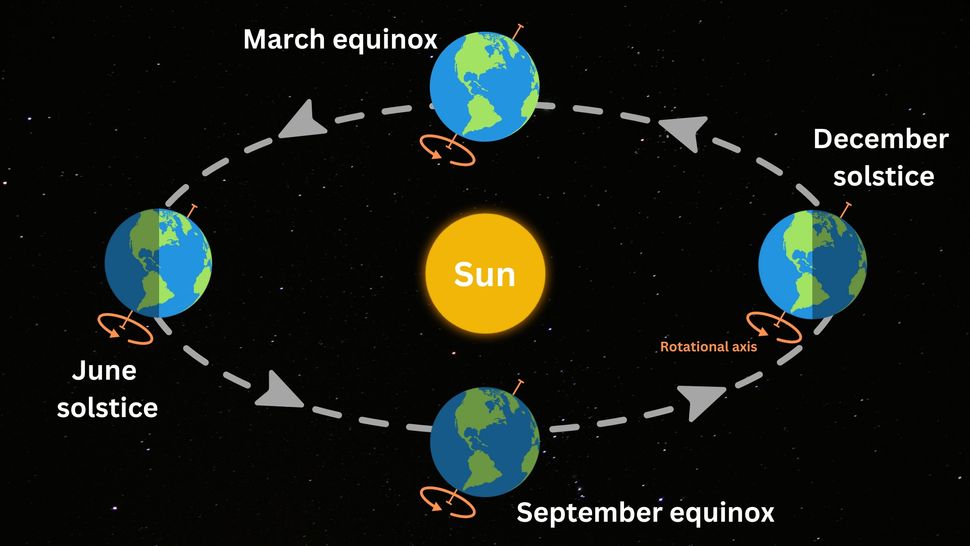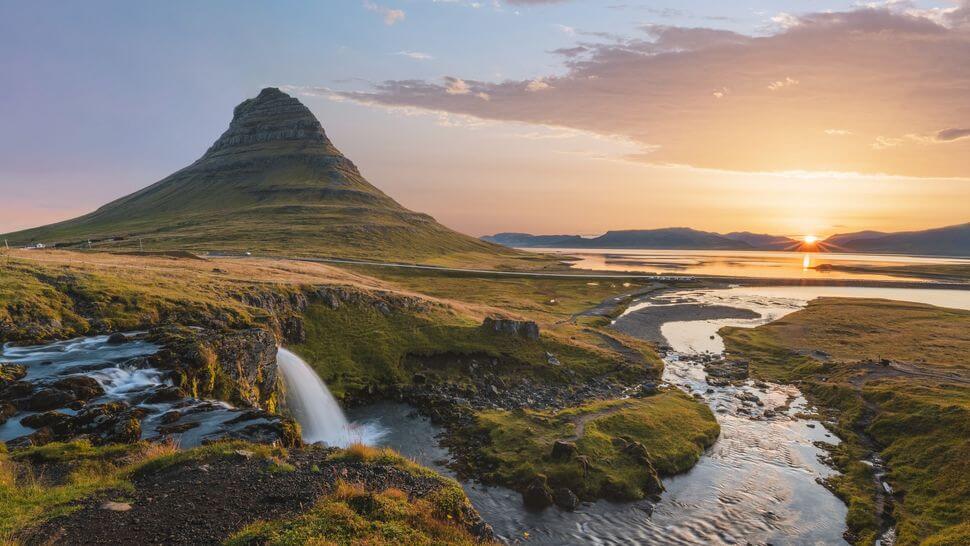
Midnight sun: What it is and how to see it (Image Credit: Space.com)
The midnight sun is a natural summertime phenomenon in which the sun never sets below the horizon, not even at midnight. While this may sound like an otherworldly scenario, for those living in the polar regions, it’s just another summer’s day, albeit one that never ends.
Here, we explore the midnight sun — also known as the “polar day,” “white night” and “nightless night” — in more detail. Learn what causes the strange phenomenon, as well as where and when you can see the midnight sun for yourself.
Related: Goodbye sun: What it’s like to experience the polar night along Norway’s rugged coastline
What causes the midnight sun?

The midnight sun is caused by Earth’s axial tilt as the planet orbits the sun. Earth spins once a day on its axis of rotation. This imaginary line that joins the North Pole and the South Pole is tilted by about 23.4 degrees and is known as Earth’s axial tilt.
This tilt causes one hemisphere to be angled toward the sun and the other away from it, and it is why there are opposite seasons in the Northern and Southern hemispheres.
During the June solstice (known as the summer solstice in the Northern Hemisphere), the North Pole is tilted toward the sun. From the northern polar region, the sun never appears to set below the horizon. This is when the northern polar region experiences the midnight sun and the southern polar region experiences 24 hours of darkness, known as the polar night.
Six months later, during the December solstice, Earth is on the other side of the sun and so the reverse scenario occurs: The South Pole points toward the sun and experiences the midnight sun, while the North Pole is plunged into 24-hour darkness.
Where can you see the midnight sun?
The midnight sun is visible from within the Arctic and Antarctic circles during their respective summer months. The closer you are to the North or South Pole during the summer, the longer you can expect to see the midnight sun.
Although you can still experience the midnight sun in the Southern Hemisphere, the Antarctic region is far more remote, making travel to that part of the world tricky. Therefore, we’ll focus our attention on some of the best places in the Northern Hemisphere to see the midnight sun.
Midnight sun in Norway

— Svalbard: April 20 to Aug. 22
— Hammerfest: May 16 to July 28
— Tromsø: May 20 to July 25
— Svolvær: May 28 to July 17
With its long, rugged coastline stretching high above the Arctic Circle, Norway is one of the best locations to experience the midnight sun. The endless days provide ample opportunities to explore the beautiful country in a whole new dimension — at night — during the summer.
According to Visit Norway, many sights and activities — such as golf, river paddling and sea kayaking — are open at night, making the most of the eternal light. In the far North, on the Arctic islands of Svalbard, it’s even possible to take a guided midnight hike tour on a glacier. And if you want to experience the midnight sun along the coast, check out Norwegian tour operator Hurtigruten, which offers many voyages throughout the summer.
Midnight sun in Iceland

Iceland boasts no shortage of adventures for making the most of the midnight sun.
Although only the northern tip of the island of Grimsey lies within the Arctic Circle and technically is the only place in the country to experience the midnight sun, the rest of Iceland is so far north that you can still experience the long 24 hours of daylight throughout the summer. In the capital, Reykjavik, the sun barely dips below the horizon from May to July. The few hours of “night” remain as light as the early hours of twilight, according to the travel site Reykjavik Excursions.
With whale-watching tours, scenic kayaking excursions near Mount Kirkjufell, and ATV tours from Reykjavik, to name but a few, Iceland offers a wealth of summertime activities to keep you more than busy. But with so much to do during the endless days, there is just one problem: When will you find time to sleep?
Midnight sun in Sweden

— Abisko: May 27 to July 18
— Kiruna: May 27 to July 14
— Gällivare: June 6 to July 6
Visitors can enjoy the beautiful, dramatic scenery of northern Sweden while it basks in the golden glow of the midnight sun throughout the summer. Swedish Lapland, above the Arctic Circle, experiences the midnight sun between the end of May and mid-July, according to the Swedish tourism site Visit Sweden.
Sweden hosts a variety of ways to enjoy the endless summer days, including scaling Kebnekaise, Sweden’s highest mountain; playing a round of golf at Tornio Haparanda Golf, where 11 holes are in Sweden and seven are in Finland; or heading to the Riksgränsen ski resort to enjoy a night on the slopes under the midnight sun.
Visit Sweden provides sound travel advice for those who are unsure of how to deal with the eternal days: “The best advice is to simply succumb to the light and stay vertical for as long as you can to enjoy this unique part of the world. Slow down and enjoy the never-ending summer days in Sweden. You can sleep when you get home.”
Midnight sun in Alaska

Parts of northern Alaska experience the midnight sun throughout the summer, and as in Iceland, there are lots of notable locations that experience eternal daylight even though the sun briefly dips below the horizon in the early morning hours.

Northern Alaska is a hive of activity during the summer, with people using seemingly never-ending days to hike, run, golf and play baseball.
The long days also provide plants with ample sunlight, sparking a rapid growth season where 100-pound (45 kilograms) cabbages aren’t considered outlandish, with many flowers and vegetables often dwarfing varieties grown across the rest of the U.S., according to the tourism website Explore Fairbanks Alaska.
Fairbanks, Alaska, boasts many celebrations to commemorate the 24-hour summer days, including a midnight sun festival, baseball games, 10K midnight sun runs and summer arts festivals. Indeed, Fairbanks certainly knows how to make the most of the midnight sun.
How long does the midnight sun last?
The duration of the midnight sun depends on your location above the Arctic Circle. The farther north you are, the longer the midnight sun lasts. If you want to experience the midnight sun to the absolute fullest, head to Svalbard, Norway, where the sun doesn’t set between April 20 and Aug. 22.
Additional resources
Read about the lives of people who live under the midnight sun in this interesting article from Science World. It isn’t just humans who are impacted by the midnight sun. Check out this article from Reykjavik Grapevine about how the midnight sun affects Iceland’s wildlife. Think the midnight sun is only found on Earth? Think again! This incredible image captured by NASA’s Phoenix lander on Mars shows the midnight sun on Mars.
Bibliography
The Complete Guide to the Midnight Sun in Iceland. Guide to Iceland. https://guidetoiceland.is/nature-info/midnight-sun-in-iceland
Midnight sun season: Explore Fairbanks, Alaska. Land of the Midnight Sun in Fairbanks, AK. https://www.explorefairbanks.com/explore-the-area/midnight-sun-season/
Northern Norway – where the sun never sets. The midnight sun | Where the sun never sets. https://www.visitnorway.com/things-to-do/nature-attractions/midnight-sun/
What and when is the midnight sun?. Midnight Sun – Polar Day. https://www.timeanddate.com/astronomy/midnight-sun.html
When and where to see the spectacular midnight sun in Sweden. Midnight Sun, Swedish Lapland and Arctic Circle | Visit Sweden. https://visitsweden.com/where-to-go/northern-sweden/swedish-lapland/midnight-sun/





